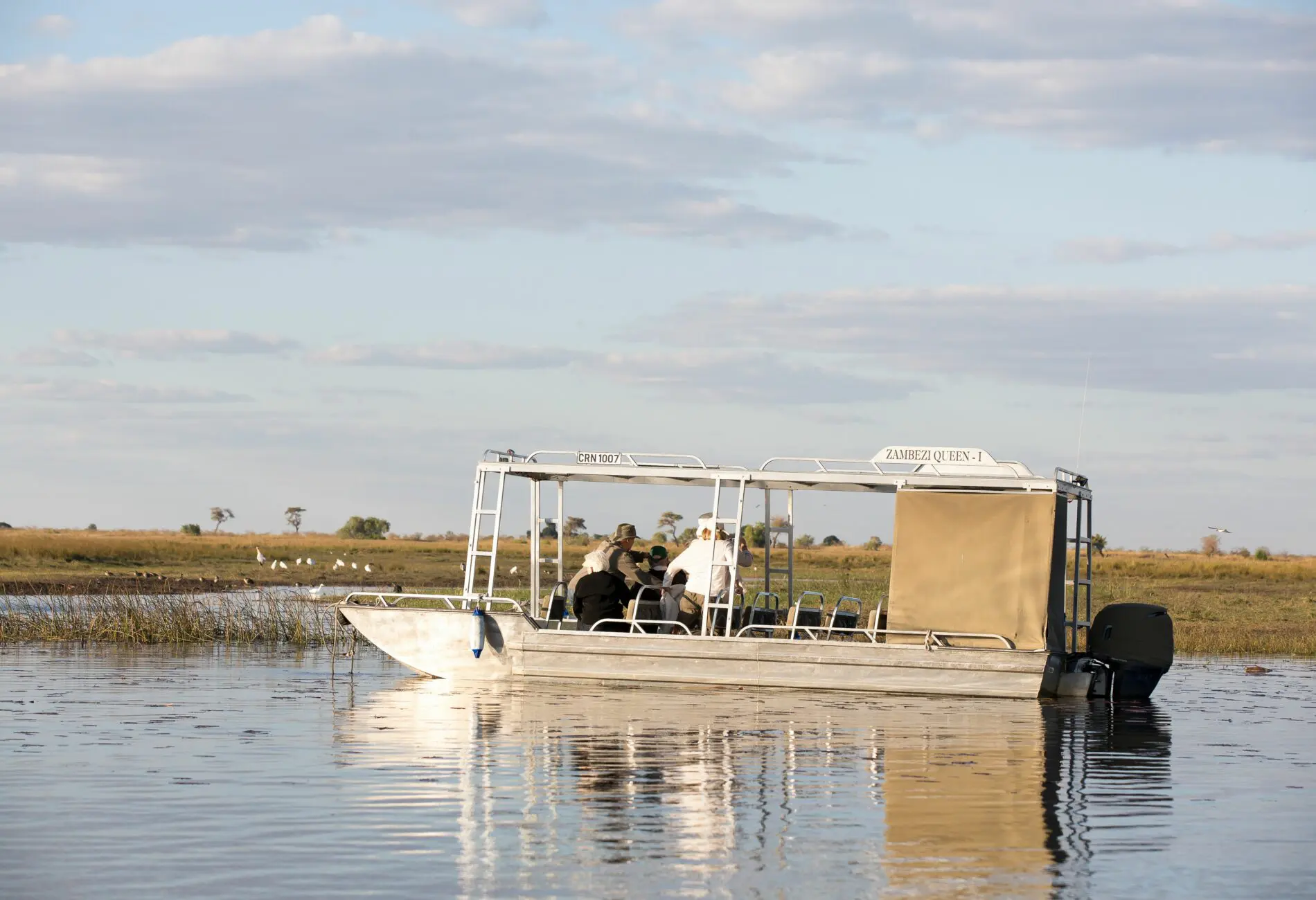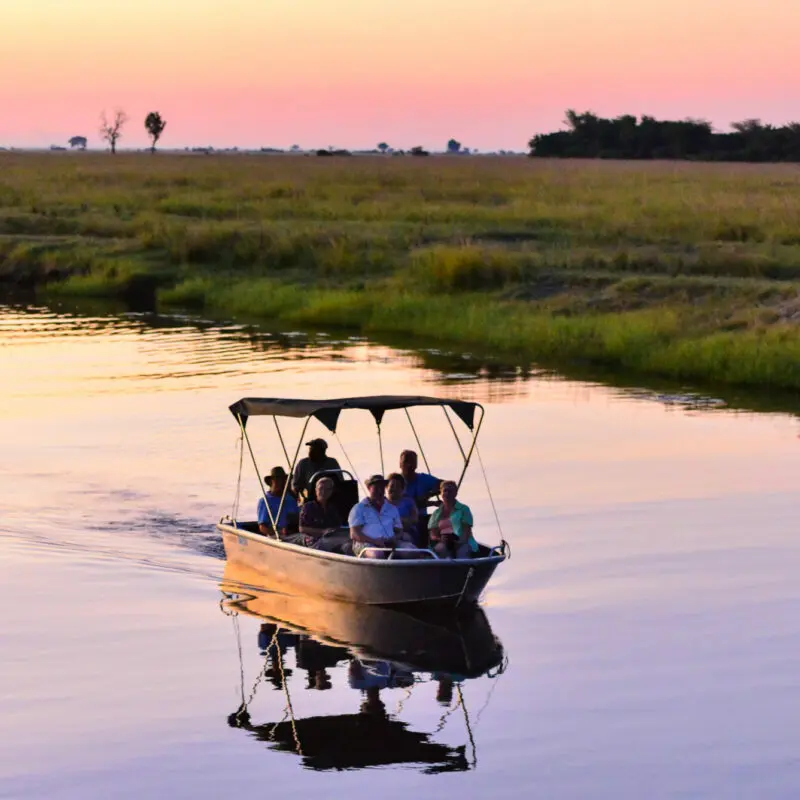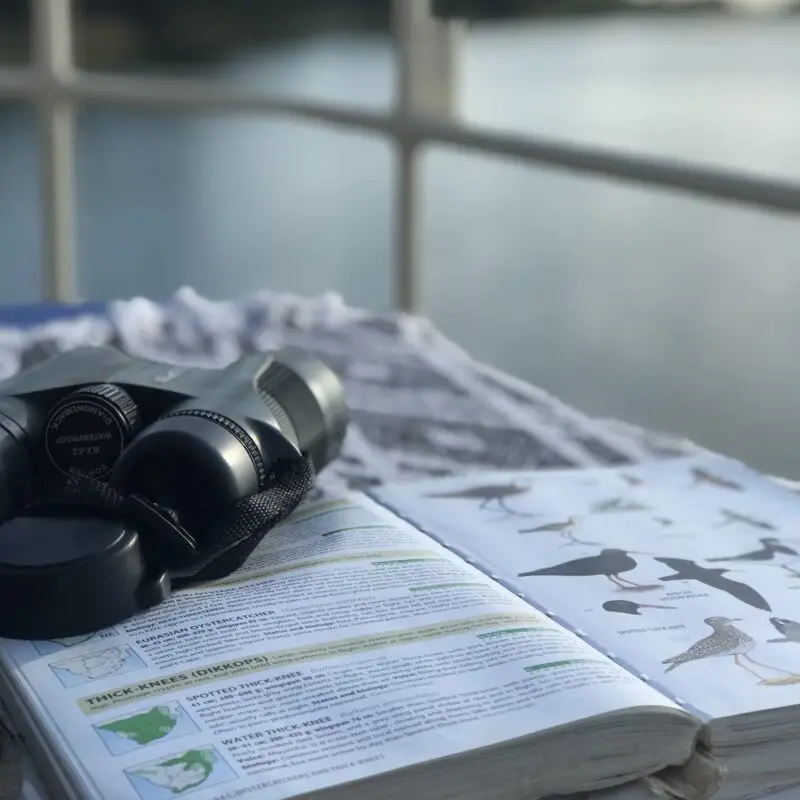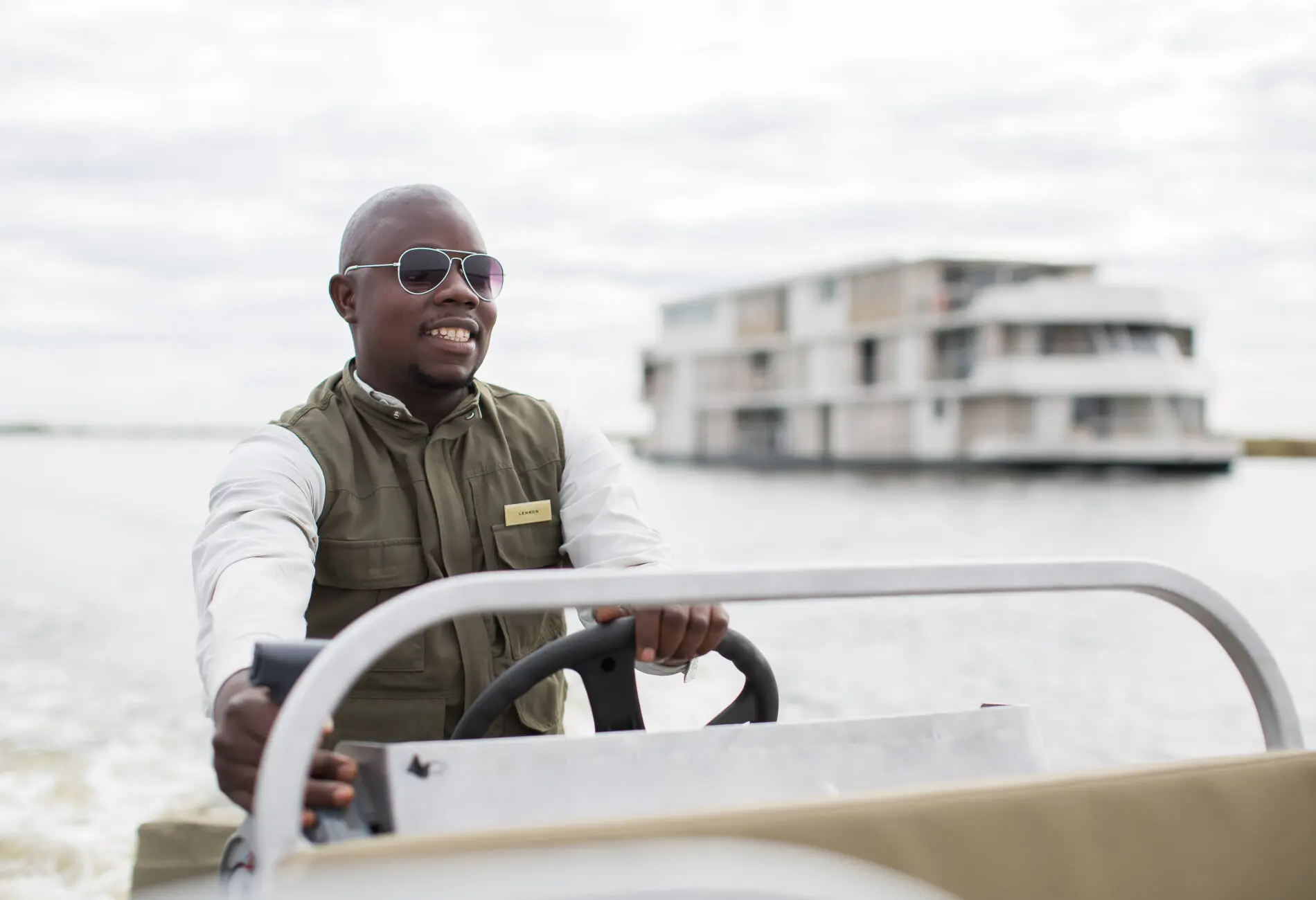For birdwatchers, there is no more remarkable place to visit than the Chobe River region, nestled in a corner of the spectacular Africa’s Eden. Meet two fellow birders, Malcolm and Natalie Prangley, who had the privilege of travelling on the Zambezi Queen and adding a few lifers to the list!
Malcolm and Natalie (80 and 72 years old respectively) are retired and live in Bedfordview, Johannesburg, South Africa. They have been birdwatching for the last 30 years but only started taking it “very seriously” as more than a passing interest in the last ten years. The couple has seen more than 200 birds in Africa (not all are identified).
We sat down with Malcolm and Natalie to talk all things feathered.


How many species of bird have you counted?
I would say around 150 identified and logged birds.
What is the most unusual bird you have ever seen?
Definitely the Narina Trogon (ed’s note: this large green and red long-tailed forest bird is a spectacular must see in southern Africa!) seen in the Magoebaskloof area in Limpopo.
Where has your birdwatching passion taken you around the world?
We have been to Botswana, Namibia, Zimbabwe, Mauritius and Mozambique. And of course, South Africa! We have also travelled to European countries but not for birding as such.
Do you have any favourite birdwatching destinations?
We love to go to Ntsiri Nature Reserve in Limpopo province, bordering the Kruger National Park. But a definite highlight was when we travelled on the Zambezi Queen where we saw a variety of birds and added a few lifers to our list.
Do you have any birds left to see on your wishlist?
Coastal birds!

What makes birding on the Chobe River so unique?
One is able to get up really close to the birds because you’re in a quiet tender boat. This is really unique and exceptional.
What makes the Zambezi Queen Collection experience so special for birdwatchers?
The guides are extremely knowledgeable and are able to show you exactly where the birds are located. (ed’s note: All Zambezi Queen guides are born and bred locals so they have a lifetime’s worth of knowledge of the region, its intricacies and its birdlife to share with guests).
Why would staying on a Zambezi Queen Collection houseboat be a better choice for a birder than staying at a lodge?
Staying on a Zambezi Queen Collection houseboat, you can access a guide and tender boat to view birds close to the water’s edge. This is where you’ll find an abundance of birds, not only water birds but inland birds as well.
Can you share your top tips for birders coming to the Chobe region?
Have a good pair of binoculars and a good camera. We use a mono tripod to keep the camera steady. And of course, it’s really important to have a good bird book to identify the many birds you’ll see. I use my iPad as well to keep a record of all the birds we’ve seen.
Your top Chobe River region birds to spot?
The African open billed stork and the Pied Kingfisher.
Are there any birds you haven’t seen that you want to on your next visit?
The African finfoot.


Read related content: Top ten birds to spot in the Chobe region
The first migrants arrive from September, signalling the start of birding season in the Chobe. What does this mean for the local birding population and birders? Do you have a favourite month or time period within birding season that you’d recommend for visiting?
We were on the Zambezi Queen in December and found that it was a good time as the weather was cloudy and the river calm. The preferred time to birdwatch is early morning and late afternoon, not when the wind is blowing!

Read related content: Summer birding in full swing
Any common mistakes made by rookie birders?
Getting too excited and making a noise while trying to identify the bird. (ed’s note: We’ve all been there!)
Best birdwatching tips and advice you’ve ever received.
- Have the best binoculars and camera you can afford.
- Wear a shoulder brace to carry your binoculars and camera.
- Bring a bird book that is comprehensive but very importantly, not too cumbersome.
Read all about our birdwatching safaris here.
